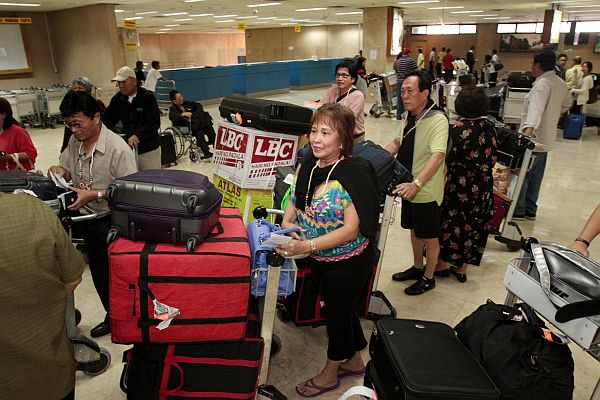More private-public sector collaboration pushed

The Bring Home a Friend program targets Filipinos staying and working abroad to become ambassadors of the Philippines to the rest of the world.
CDN FILE PHOTO
BRING HOME A FRIEND LAUNCHED
Greater collaboration between the government and private sector is needed to convert opportunities provided by the tourism department’s Bring Home a Friend (BHAF) program into inclusive economic growth.
Justin Uy, chairman and chief executive officer at JPark Island Resort & Waterpark on Mactan Island, made this call as the tourism department launched the BHAF program in Central Visayas on Monday at JPark.
The resort in Mactan is one of the major partners of the Department of Tourism in Central Visayas (DOT-7) in this incentive-based referral program.
Uy said they are committed to supporting the DOT’s program as they recognize the role tourism plays in the growth of the country’s economy.
“It creates income and generates jobs for many regions. The Bring Home a Friend program is one example of the convergence of different sectors to promote Philippine tourism,” he said.
Banking on the success of the program’s predecessor, Uy said he believes that this will be another successful undertaking.
BHAF program
The BHAF program is an initiative which was relaunched in Manila in October this year after two decades since it was first introduced in 1994.
The program taps Filipinos living and working abroad as ambassadors of the Philippines to the rest of the world.
“This was part of DOT’s campaign 20 years ago to drive tourist arrivals amid the challenges Manila was facing. With Filipinos inviting guests, they are assured they are treated like family,” DOT-7 Regional Director Joshur Judd Lanete II said during the program launching at the JPark Island Resort & Waterpark on Mactan Island last Monday.
Lanete said that during the program’s initial run, it was able to drive US tourist arrivals in the Philippines.
Perfect time
Following the terrorism incident in Bohol last April and the recently concluded siege of Marawi City, Lanete said now was the perfect time to prove to foreigners that the Philippines is a safe place to visit.
Central Visayas saw fewer visiting tourists during the first half of 2017 compared to the same period in 2016, with the region still recovering from the aftermath of terrorist activities in Bohol earlier this year.
According to preliminary data from DOT-7, 2.98 million visitors came to the region between January to June 2017, down by 3.5 percent from the 3.10 million arrivals recorded during the first six months of 2016.
Timely launching
“We hope this referral program will equal or even surpass the success of its previous run,” Lanete said.
The launching of the program in Central Visayas was a timely one since it coincides with the traditionally long Christmas season and the Sinulog festivities in Cebu in January.
The BHAF program runs from Oct. 15 to April 15.
Sponsors and guests
Cebuano sponsors, who are either Philippine residents or living abroad, will get a chance to win prizes such as a condominium from Megaworld Corp., a brand new Toyota Vios, and a P200,000 gift certificate from Duty Free Philippines.
Meanwhile, their foreign guests can win round-trip international tickets and tour packages to Davao, Palawan and Cebu.
Winning guests bound for Cebu will get to stay for five days and four nights at JPark Island Resort & Waterpark.
Entries and points
DOT said the number of eligible entries will depend on points they earn corresponding to their guest’s country of origin.
Participants get two points for Asia and Australia, while they can get three points for visitors coming in from Africa, Middle East, Europe and America.
Among the countries with a large number of Filipino residents are Australia, China, Hong Kong, Italy, Japan and Malaysia.
Central Visayas’ top five foreign markets in terms of tourist volume for the covered period are Korea (402,858), Japan (183,644), China (171,197), USA (106,075) and Australia (32,396).
Arrivals from Korea, Japan and China posted positive growth at 2.31 percent, 2.82 percent and 55.54 percent, respectively.
The number of visitors from the US and Australia, meanwhile, dropped by 4.26 percent and 64.14 percent, respectively.
Disclaimer: The comments uploaded on this site do not necessarily represent or reflect the views of management and owner of Cebudailynews. We reserve the right to exclude comments that we deem to be inconsistent with our editorial standards.
